|
As the holiday season approaches, we find ourselves surrounded by the warm glow of Thanksgiving and Christmas. It is a time when families come together, delicious meals are shared, and joy fills the air. The holiday season, with Thanksgiving and Christmas at its heart, provides a perfect backdrop for teaching about kindness, compassion, and gratitude. This is a time to think about how to add some festivities into our teaching as well as some special meaning. I love to use this time to help kids think about others and how we can make things happier or easier for them. Acts of kindness are a special focus at this time of year. Here are some ideas to try that might help foster a giving and caring spirit. Counting Our BlessingsWhen we think of Thanksgiving, we think of all the things and people we are thankful for. We start to focus on what we have and we start to count our blessings. Often we need to have these reminders as we live in a world of "all about me" bombardment. There are several ways to share our thoughts. One that works well is a "Thankful Tree". Have your students craft leaves out of paper, and on each leaf, they can write or draw something they are thankful for. These leaves can be attached to a tree displayed in the classroom, forming a visual representation of gratitude. Another way to focus on things that they are thankful for is to create a gratitude journal and write things in it that they are grateful or thankful for. Incorporate gratitude journals into your classroom routine. Have your students write or draw one thing they are thankful for each day. This practice helps them focus on the positive aspects of their lives and appreciate the little things that often go unnoticed. Here is a fall gratitude journal that I created that might work for you. Spirit Of GivingAs Christmas approaches, emphasize that the holiday season is not just about receiving gifts but also about the joy of giving. Share stories or read books that focus on the spirit of giving, such as "The Giving Tree" by Shel Silverstein or "How the Grinch Stole Christmas" by Dr. Seuss. Discuss how the characters in these stories experience joy and fulfillment through their acts of kindness. Acts Of Kindness ActivitiesPlan classroom activities that promote kindness and compassion. Encourage your students to do things to brighten up someone's day and make it special. Create an "Acts of Kindness" calendar for the days leading up to Christmas. On each day, include a small act of kindness that students can perform. These can be as simple as saying a kind word to a classmate, helping a family member with a chore, or making a holiday card for someone in need. Make it a fun daily ritual in your classroom to share stories of these acts and celebrate the good deeds your students have done. Here is a set of coupons that might be fun to hand out to others. Provide opportunities for your students to participate in activities in the school community that provide service to others. This could include participating in a food drive, collecting toys for underprivileged children, or visiting a local nursing home to sing carols and spend time with the elderly. When children see the impact their actions have on others, it deepens their understanding of the true meaning of the holidays. Different Holiday TraditionsEnsure that all students feel included during holiday celebrations. The holiday season is a great time to teach students about the diversity of cultures and traditions. Acknowledge and respect the diverse cultural traditions within your classroom. Teach your students about different holiday customs, fostering understanding and acceptance among classmates. Discuss various holiday celebrations from around the world. There are many different books that would work well for sharing the special holidays and celebrations that happen at this time of the year. The book "Horrible Harry And The Holidaze" shares aspects from several different holidays celebrated by different members from Harry's class. (My students enjoyed this because it was with characters they were familiar with from other books in the series.) There are many other ways to help kids to develop a spirit of giving. It might be fun to include them in the discussion and find out ways they would like to try out. This gives ownership and helps them to feel valued as well. Teaching our young students about the significance of kindness during Thanksgiving and Christmas is a priceless gift that will serve them well throughout their lives. By incorporating these strategies into your teaching, you can make the holiday season a time of both joy and valuable life lessons. Let's inspire the next generation to embrace kindness, compassion, and empathy, creating a brighter and more compassionate future for all. Related PostsStory books have a special way of capturing our children's imaginations and teaching them important life lessons. They can help our kids understand and care about other people's feelings, appreciate diversity, and feel good about themselves. In fact, story books can be powerful tools for helping children develop empathy, learn acceptance, and build confidence. Special Story Books For Developing Empathy, Acceptance, and Self ConfidenceOne of the great things about story books is how they make us feel. When children read stories, they connect with the characters and start to understand their own emotions better. This connection helps them show kindness and understanding towards others. Here are some of my collection that I used every year to help build a positive classroom environment. Each of these books tackles important themes such as self-acceptance, embracing individuality, standing up against bullying, and navigating cultural differences. They provide opportunities for discussions about empathy, understanding, and inclusivity, encouraging children to appreciate diversity and embrace their own unique qualities. Books About Anxiety And Self AcceptanceIn "A Bad Case of Stripes" by David Shannon., Camilla Cream loves lima beans but she is afraid of what others will think. She develops a strange case of stripes that changes with her emotions. Through this colorful and imaginative tale, the book addresses themes of self-acceptance, embracing one's true identity, and overcoming the fear of judgment. In "Woolbur" by Leslie Helakoski, Woolbur, a free-spirited sheep dares to be different. Woolbur's unique personality and refusal to conform to the flock's expectations inspire children to embrace their creativity, think independently, and celebrate their own quirks. The book encourages kids to express themselves authentically and embrace their individuality. In "Wemberly Worried" by Kevin Henkes, Wemberly worries about everything. This is a heartwarming and reassuring story that teaches children important lessons about managing their worries and finding comfort in relationships with others. Books About Problem Solving And Considering Other PerspectivesStory books also provide opportunities for problem-solving. Through the characters' challenges and dilemmas, children learn to think critically, consider different perspectives, and make choices that consider others' feelings. Howard B. Wigglebottom is a beloved character in a series of children's books by Howard Binkow. Howard is a young rabbit who encounters various situations and learns important life lessons throughout the series. Here are some of the lessons that Howard B. Wigglebottom has learned: In "Howard B. Wigglebottom Learns to Listen," Howard discovers the value of active listening. He realizes that listening attentively to others is essential for understanding, learning, and building positive relationships. In "Howard B. Wigglebottom Listens to His Heart", Howard learns about the importance of trusting his instincts and listening to his inner voice. Through relatable situations, Howard discovers the value of following his passions, making choices based on what feels right, and being true to himself. In "Howard B. Wigglebottom and the Power of Giving", joy and fulfillment that comes from giving and helping others is emphasized. Howard discovers the positive impact of acts of kindness, sharing, and generosity, teaching children the value of empathy and making a difference in the lives of others. These stories featuring Howard B. Wigglebottom are designed to engage young readers and provide them with valuable life lessons in an accessible and relatable manner. The character's experiences and growth inspire children to develop important social and emotional skills, promoting positive behaviors, empathy, and good character. Bucket Filling BooksHere are several different books that focus on bucket filling. Bucket filling is a concept that promotes kindness, empathy, and positive behavior. The idea behind bucket filling is that everyone has an invisible bucket that represents their emotional well-being. When we engage in acts of kindness, empathy, and encouragement, we "fill" someone's bucket, including our own, and promote a positive and caring environment. Conversely, negative actions, such as unkind words or bullying, can "dip" into someone's bucket and diminish their emotional well-being. Dealing With Teasing And BullyingStory books create a safe and imaginative space for children to explore complex emotions and social situations. They provide a platform for conversations in the classroom, where children can share their thoughts and learn from others' perspectives. "Oliver Button Is a Sissy" by Tomie dePaola, tells the story of Oliver Button, a boy who faces teasing and criticism because he enjoys activities traditionally associated with girls, such as dancing. Oliver finds strength and self-acceptance in pursuing his passion despite societal expectations, teaching children the importance of being true to oneself and embracing individuality. "The Recess Queen" by Alexis O'Neill, tackles the issue of bullying in a relatable and engaging way. It follows the story of Mean Jean, the recess queen, who dominates the playground with her intimidating behavior. When a new girl named Katie Sue arrives, she challenges Mean Jean's reign by extending kindness and friendship. The book promotes inclusivity, empathy, and the power of friendship. Books About Self WorthBy using story books in the classroom, we can engage children in meaningful ways. We can teach them to understand and care about others, accept and appreciate differences, and develop a positive sense of self. These Max Lucado books for kids are known for their engaging storytelling, vibrant illustrations, and uplifting messages. They aim to inspire children with the principles of faith, love, acceptance, and self-worth, while also fostering their spiritual growth and understanding. The books provide an opportunity for parents, caregivers, and educators to share valuable life lessons with children in an accessible and enjoyable way. Overcoming Obstacles And Cultural DiversityStory books inspire children to believe in themselves and overcome challenges. Characters who face obstacles show kids that they too have inner strength and can navigate life's ups and downs. "Angel Child Dragon Child" by Michele Maria Surat, tells the story of a young Vietnamese girl named Ut who moves to the United States and faces challenges as she adapts to a new culture and language. The book highlights Ut's resilience, the importance of family support, and the strength found in embracing one's cultural heritage while navigating new experiences. "The Name Jar" by Yangsook Cho, explores themes of identity, cultural diversity, and acceptance. It follows a young Korean girl, Unhei, who moves to the United States and contemplates changing her name to fit in. Through Unhei's journey, the book teaches children the value of embracing their heritage and appreciating the differences in others. Story books give children a chance to think about their own experiences and emotions. By reflecting on these stories, children become more aware of their own feelings, strengths, and worth. They feature characters who exhibit positive behaviors like kindness and resilience. These characters become role models for children, teaching them valuable lessons and helping them feel good about themselves. In "7 Habits For Happy Kids" by Sean Covey, children are introduced to seven essential habits that can help them develop a positive mindset, build healthy relationships, and make responsible choices. It teaches kids about setting goals, prioritizing tasks, and taking personal responsibility. The book empowers children to become proactive, confident, and happy individuals. These are just a few of many books out there that help develop a nurturing environment that fosters empathy, acceptance, and sef-esteem in children. By choosing meaningful stories, having open discussions, and encouraging empathy and self-reflection, we can help children grow into kind and confident individuals. Here is a template that will help children to share their feelings and connections to the stories that they read. Get a free copy by signing up to my newsletter. Let's continue to embrace the power of story books. Each story we read plants seeds of kindness and acceptance in our children's hearts. Together, we can nurture a generation of empathetic and accepting individuals who celebrate diversity and believe in themselves. Related PostsA Time To RememberThis is one of my favorite times of the year at school. It is a time to remember, focus on kindness and gratitude, and prepare for giving and sharing. With the arrival of fall, Thanksgiving is on the horizon, and Christmas is not too far behind. The summer has ended and the excitement of back to school is still in the air. Along with all the times of thankfulness, we need to remember what sacrifices were made for some of the things we take for granted. Because of those who fought for our freedom, we are able to live a peaceful existence. Not everyone is that fortunate. As November nears, it is important to think about our veterans and remember. November 11th is a day set aside for remembrance, but we need to remember throughout the year. This is a good time to start talking about gratitude, peace, and being kind to one another. Preparing For November 11In the weeks leading up to Remembrance Day or Veterans Day, there are many different activities and discussions that can be part of the school day. There are different points of focus that can be used, but I feel that the more we can help kids to connect with ways they can continue to promote peace and kindness the more likely we are to help them understand that they can make a difference. I have always found music to be a great way to connect with kids. Here are some songs that I used in my classroom that were very meaningful and led to great discussions. They focus on peace, being special, and part of peace in the world. They also help us to remember to take time to remember those who fought for our peace. Writing poems about peace and creating posters and drawings that show ways we can spread peace and kindness to others is something else that can be done as a lead up to November 11. These can be shared in assemblies, on bulletin boards, and in newsletters. Practicing acts of kindness and sharing moments of gratitude are also great ways to demonstrate how kids can help make peace a reality. Resources for RemembranceHere are some different resources that might help with preparing for Remembrance Day and Veterans Day. Related PostsThanksgiving And GratitudeThere is always occasion to be thankful and to show gratitude, but at this time of the year, it is a main focus here in Canada. Next week is Thanksgiving and despite all that is happening around us in the world, there are many things to be thankful for. This is the time to stop and take time to remember and recognize the good things and the things that we have been blessed to have or experience. This is especially important right now for our mental health. Of course, this may not be an easy task for many because of all the negative stuff we are bombarded with daily, but it is very important for our own mental well being and for our interactions with others. It is hard to be positive and happy when all we hear and see each day is negative. We need to start filling up our buckets and those around us with gratitude and blessings. As we begin to focus on these things, our attitudes will change and we will be able to be more positive and productive. People will want to be around us rather than avoid us and we will ultimately fill more buckets and spread kindness around us. One way we can begin is to review what bucket filling is and why it is important. We can also start a gratitude journal and write down a list of things that we are grateful for. Another activity that works well is a compliment sheet for others. Often we don't realize that we are helping others feel good and doing things that they appreciate. A compliment sheet allows others to share what they notice or appreciate. It is amazing to watch kids beam when they see that they have made a difference for others. I have created some seasonal gratitude journals. You can check them out here. I am giving a free copy of the fall journal for you to try. Get your free copy now. For most people, Thanksgiving time is a special time for family. It is a time to gather together and share a meal and just enjoy being with each other. Last year, many of us didn't have the opportunity to get together because of the pandemic. Sure, we were able to meet through video chats, but it was not the same. It really brought home how much gathering together was important when we weren't able to do so. I am hoping that we can make up for that this year and really look forward to being with everyone. I hope that you are too. Of course, not everyone will have a happy time during the Thanksgiving weekend. We need to be aware of those who may have challenges and try to help them to have a reason to be thankful too. This might be helping out at a soup kitchen and sharing smiles and stories with others. It might be inviting someone who is all alone over to join you for dinner. Each situation will be different and the options will need to fit in with the families doing the giving and sharing, but if everyone does something to make it a happier time, we will all benefit. The saying, "Giving is better than receiving" never was truer. There is no better time to help change the outlook for people from a negative, hopeless view to a positive and hopeful view. Together we can help make this happen. Of course, there are also all of the typical types of activities done at school that can be included as reading, writing, or math activities to help the kids focus on the meaning of Thanksgiving. These are important learning activities, but I still feel that we need to go further than just sharing information. We need to adopt a kindness attitude. What better time to do acts of kindness than now. Acts of kindness can be very simple and free. Sometimes people think they need to spend money to give to others. A smile, helping hand, visit, or phone call can also help to make someone's day better. We can help in so many ways if we just stop and think about others and how we can make their day a little brighter. If we do acts of kindness for others, we will set the example for our students, and our own families. I believe that an attitude of gratitude and thanks will make the world a better place. If we are grateful for what we have, we will have a positive outlook on life. We will be able to share this with others and fill our buckets and theirs too. It truly is important for good mental health.
Back To School FunUsing fun activities will make back to school more engaging and exciting for kids and they will probably participate more in the activities. The types of activities that you choose will depend on the age and composition of your class, but there are some that can be used in most situations. The key is to get kids participating and enjoying their time back at school. Getting To Know You ActivitiesGetting to Know You activities and ice breakers are great ways to get started. How many times have you been to workshops where you do activities like "Find Someone Who...." These activities are meant to get you moving around and interacting with others instead of staying with one or two familiar people. It may not always feel comfortable for some, but they may meet someone with common interests in the process. A fun twist to this might be to have the four corners of the room as meeting places and then ask questions that require the kids to choose one of the options and move to the appropriate corner. For example: Do you have brothers? Go to corner 1. Do you have sisters? Go to corner 2. Do you have brothers and sisters? Go to corner 3. Are you an only child? Go to corner 4. If you are interested in some ice breaker mixer cards, check out this freebie. Learning about your students' interests will help with planning and preparing activities that will engage them in their learning. Just like us, kids are more likely to want to do something if they are interested in the topic. I always started the year with different interest profiles or activities that helped me to find out more about my students. There are several kinds of activities available, but these are the ones that I used most often. This is Me booklet (this is part of my basic vocabulary activities booklet) My heart....my passions (likes and hobbies that are later used for writing prompts. It is part of my using five senses and details writing packet) Shield (this can be used for displaying talents) T-shirt (another form of all about me) Team building and classroom management activitiesAnother crucial piece of my start up was creating a great community. Team building is important if you want the kids to work together to have a successful year. They become each other's cheerleaders and they encourage each other when things get tough or when behaviors need to be improved. I did many different activities to make this happen, and I also incorporated classroom management techniques. One of the techniques I started using before retiring was Whole Brain Teaching. This worked well with my kids and I was amazed at how quickly they latched on to the strategies that I used. I didn't get to use it fully, but I was very happy with how the parts I used worked. If you want to learn more about this, you can check it out here. I also created some posters of the rules to use in my classroom. You can find out more here. Bucket filling activities and Acts of Kindness activities were also part of my lessons during those first weeks of school. These were instrumental in helping the kids to think about others instead of always focusing on themselves. Positive Self Esteem And Growth MindsetBy now, you probably know that developing positive self esteem is one of the most important things that I focus on with kids. Positive self esteem is so important when developing self confidence and a positive outlook on the world. It is our job as teachers to help kids see that they are valued and important and that they have much to contribute to the world around them. Having a positive attitude is key for this to happen. In recent years the focus has been on social emotional learning and developing growth mindsets. This has a direct impact of learning. Helping kids to see that they "can" do things and that they are moving forward encourages them to keep trying and they begin to experience more success and their self confidence grows. You can find several resources in my self esteem category and you can read more about optimism and pessimism activities here. Communication is keyCommunication is a key component for a successful year. This communication involves parents, students, and colleagues. All of these types of communication are necessary. Students need to know what is expected of them and they need to know they are accountable for their actions. They also need to know that there will be communication between you and the parents. This communication should be positive and should not be restricted to problems or concerns that have occurred. Successes should be communicated too. It is very exciting for a parent to hear what is going right with their child. Most parents are used to calls being for negative situations. A positive call can make their day too. Communicating with colleagues is helpful for many reasons. Collaborating on common units, getting familiar with concerns about other students that you may encounter when on duty or field trips, sharing of materials and other resources, and agreeing on some common rules and routines are some examples. Back To School FormsOne of the first things I did each year was send home a Getting Acquainted form. I remember being told once by my administrator that kids are precious and parents have entrusted them to us. What better way to acknowledge this than to ask for their input about their child. The Getting Acquainted form also provides valuable information from the parents' perspective which can be helpful during future communication. The other form that I send home is a Home Reading letter. Many parents want to be able to help with their child's learning, but aren't sure what to do. This letter provides different strategies to use when reading with your child. It also helps parents to see that this is something that should be positive for both the child and the parent rather than stressful and a struggle to do. Many teachers have sharing times or special helpers or stars in the primary grades. I used to assign certain days for sharing for small groups of children so that it was consistent and not to time consuming during the morning start-up. This routine also helped children to prepare ahead of time when they knew that their sharing day was coming. For the star or special helper, I changed the person each day. I know that some teachers keep the same person for the week or do some other variation of this, but for me, daily changes worked well. If someone was absent, it was easy to see who was next and make adjustments as needed. I created a set of start up forms for back to school that include star of the day, sharing day schedule, and some criteria forms and examples, as well as the Getting Acquainted note and the Home Reading letter. You can check it out here. First Week Of School ResourcesI have created several first week of school activities that can also be done virtually, if necessary. These activities are an easy startup to math and language skills after summer break. They can be done in any order, and you can select which ones to do. They are available individually, or as a bundle. This is only a sampling of what can be done the first week of school that will provide engagement for the kids and set you up for a successful year. Some Final TipsHere are a few final tips to think about. • Simple management things will help you keep your sanity. For example lining up routines, how to walk in hallways, rules for working in small groups, etc. • Focus on the positive, not the negative. It can be exhausting to constantly redirect those who choose to misbehave or distract others. When you focus on those doing what is expected, often it will encourage other to follow suit. • Everyday is a fresh start. This goes for students and for YOU. • Have fun with your students and share stories, anecdotes, etc. with them. Enjoy your time together. If you are looking for some activities and resources that are free and fun to use, sign up for my newsletter.
Are you looking for some easy Christmas gifts kids can make? Making gifts for families is a special part of the Christmas season. At school, I always tried to find something that was a little different that was special, but still easy enough for my students to do. It was important to have a variety of different gift ideas because I often had the same students for more than one year and I didn't want them creating the same thing year after year. Here are some of the different things we did that you might be able to try with your students. One of the most popular things was the "stained glass" frame. This was done with a transparent film and felt pens. It was backed with tin foil. You can read about it here. I updated it recently, but the procedure is still similar. Here is the update. Light bulb ornaments were fun to do. I saved burned out bulbs until I had enough for the whole class. Nowadays, this would take a very long time to do because the LED bulbs last so much longer. Perhaps you could ask around for people to save bulbs for you, or you could buy some cheap ones to use. We put the ribbon on first with a glue gun and then we painted. We started with a base coat of blue paint, and then we hung them to dry. We painted snowmen on the bulbs when they were dry. Unfortunately, I don't have a picture of the finished product. I suppose you could buy those DIY clear plastic ball ornaments and do the same thing. Potpourri jars are fun to make and they can be used over again by changing out the potpourri when it loses it scent. You can add to it by putting decorative paper on it in a modge podge fashion. I used diluted liquid white glue and small squares of wrapping paper. The sample was from Mothers Day so it has a different pattern of paper and topper. The topper could also be netting that you get from the bags when buying some fruit or produce. Decorative candle jars are also easy to do and they are handy to have around during power outages. We still have some around the house. They can be painted, modge podged with Christmas paper, or even decorated with rub on transfers. How about some snowflake seeds? These jars are great for holding treats or other special things. We filled them with popcorn seeds and called them snowflake seeds. They were fun to make and the kids enjoyed eating them later on. Do you have some old CDs kicking around? How about using them as the base for a center piece. They shine and they can reflect light from candles. They can be decorated with branches, leaves, ribbon, pine cones, or many other different things. Beeswax candles and fire starters were a couple of other things we did in years past. The candles don't need to be big, but full size ones do last longer. The fire starters are really just small candles on the end of wooden skewers. These bell toppers for pencils were a great hit for our diy spring fundraiser, so I made some for my students for gifts. They loved doing their writing with them and we had music throughout the classroom as the bells rang out. These "I Spy Jars" were another favorite from our fundraiser DIY crafts. They are a great gift for family members and they are fun to use. Small trinkets and ornaments are also fun to make. Puzzle wreaths, reindeer brooches, bell necklaces, felt animals, pencil toppers, are a few that I have used in the past. Over the years, I collected a lot of different materials for crafts. The year I retired, I decided to have a make and take session with my students. I put out all my Christmas materials and I let them make whatever they wished. It was amazing to see what they came up with. When we allow children to use their imaginations when they are young, they can surprise us. Sometimes their creativity can open up new ideas for us too. This might be a fun way to get inspired. We mustn't forget the handmade cards and wrapping paper. These special touches personalize the gifts and make them even more special for the recipients. Here are some cards I made for my students. I hope these ideas help inspire you as we move into the Christmas season. I would love to hear how they work for you.
Acts of kindness are perfect for Christmas time. Often at Christmas time, there can be a tendency to think about all the things that we want. We are often asked the question, "What are you asking Santa for?" or "What do you have on your Christmas wish list?" or some other similar type of questions. It isn't wrong to want things or to hope for certain things, but Christmas is a great time to be thinking about what we can do for others too. There is a sense of joy and fulfillment that can come from thinking of others and giving to others. It is important to teach others that giving is an important part of Christmas. Doing random acts of kindness has the power to give joy to others and help make the world a better place. These acts do not have to be expensive or difficult to do. They just have to come from the heart. During my last year of teaching, I created a set of cards for my students to use for Christmas and we called them RACK. (Random Acts of Christmas Kindness) Each child was given a few cards to take home and use as a countdown to Christmas. They had choices provided as samples of what they could do, but they also had the option to do something else that they decided on. It was exciting to hear some of the things they did as they took on this challenge. I hope you find this free resource useful. Click on the image to get your copy. Related Posts
Simple acts of kindness can change people's lives. I believe that when we have an attitude of gratitude, we are more likely to experience the blessings life has to offer. At this time of the year, I like to focus on giving and being kind. It is so easy for children to get caught up in the commercialism of advertising with Christmas just around the corner. It is important that they think about giving instead of all the things they would like to have. When I was still teaching, I shared with my class the concept of paying it forward when we talked about peace and veterans and all they gave for our freedom. I created a paying it forward poster using poppies to show how quickly this could explode. When I saw this video I immediately thought about how it showed examples of paying it forward with simple acts of kindness. I shared it with my students and we discussed how it takes so little to make a difference. It costs so little, but it pays big dividends. More Videos of Kindness Here are some more video clips that share acts of kindness and the impact they can have. I shared these with my students as well and it was amazing to see the impact it had on them. I also spent time working on the concept of bucket filling and creating positive self esteem with my classes. This helped them to understand the importance of being kind to one another. As we think about each other and how special we are, we can help make other people feel special too. Here is a great video that shares this idea. My kids loved singing along with it. Here is a copy of my paying it forward poster using children instead of poppies. I hope you will find it helpful in sharing the idea of giving and sharing during this season and all year round.
This is the time for remembering our veterans. Halloween is over and Thanksgiving and Christmas are not far away. Here in Canada, we have already celebrated Thanksgiving. It is with gratitude that we should be thinking of our veterans and the sacrifices they made for our freedom. We are blessed if we live in a country where freedom is available for everyone. This is huge and we need to always remember that there are many places where this is not true. November 11th is a day dedicated to our veterans for a time of remembrance. In 1918 at the 11th hour on the 11th day of the 11th month the Armistice agreement was signed that ended the first world war. We dedicate that time each year to a ceremony of Remembrance. In Canada, we celebrate Remembrance Day, and in the USA, they celebrate Veterans Day. Our celebrations may differ slightly, but they are similar in one respect. They are a day to give thanks and remember. This year things will be different. Many places will be celebrating virtually because of the pandemic. That doesn't mean we won't be taking the time to remember, it just means we may need to do it online or through a television broadcast. It is important that we still take the time. Because it was so long ago, many of us don't really understand just how much sacrifice our veterans made for us. It is through stories, interviews, and research that we learn this. When we see and hear of other countries that are still in a war zone, it is hard to truly understand what they are going through. We have so much to be thankful for. In the week leading up to Remembrance Day, there are many opportunities to focus on this and share stories and information to help our students understand. This is a great time to do writing activities, reflections, posters, etc. One of my favourite things to do was introduce songs of peace and remembrance to my students. This one has a big impact on children and adults. If you want to find out more about some of the other songs I used, check them out here. I liked to focus on acts of kindness and peace. This is something that children can be a part of and they can understand that they can make a difference even now. Here is a poster I created to show them that one person can make a difference by sharing acts of kindness with others. This can create an explosion of kindness and peace. Get a copy for yourself by clicking on the image below. Here are some other things that I created that can be used to help children understand and give thanks to our veterans. Thank you to all our veterans and to those who continue to fight for peace and freedom. Related Posts
One hundred years ago at 11:00 on the eleventh day of the eleventh month, (November 11, 1918), World War 1 ended. This was known as Armistice Day. Many countries observe this day as a day of remembrance for all of the people who fought for our freedom. In Canada, ceremonies are held all over the country. Over time, veterans of other wars have been included in the memorials. It is important that we teach our children about this day and what it means. Many people have never experienced war and its devastation. We don't truly appreciate the freedom that was given to us because of the sacrifice of our veterans. Many people treat November 11 as a day off. It is my hope that we can remind people to take a few moments to remember and thank our veterans. Related Posts
|
About Me Charlene Sequeira
I am a wife, mother of 4, grandmother of 9, and a retired primary and music teacher. I love working with kids and continue to volunteer at school and teach ukulele. Categories
All
|




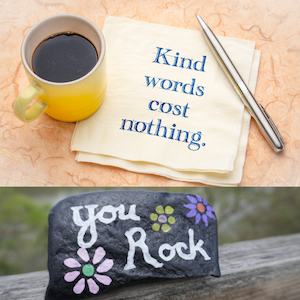




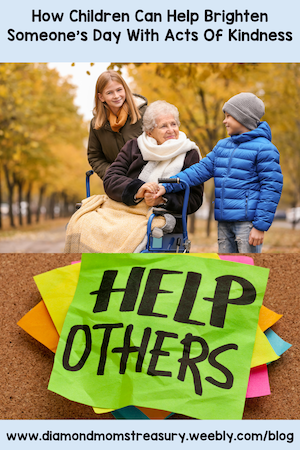



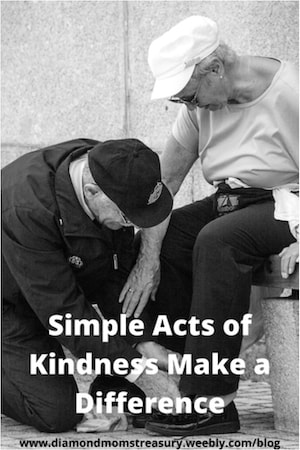



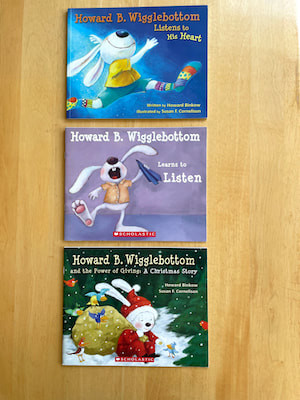














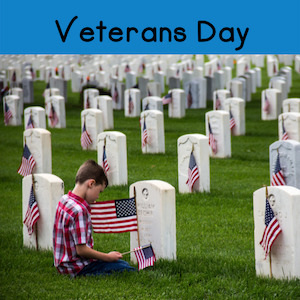
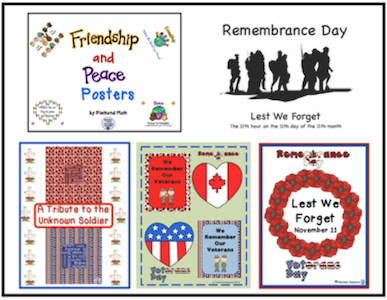
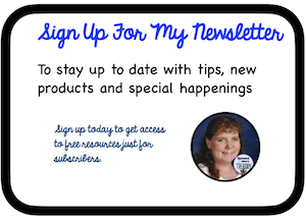


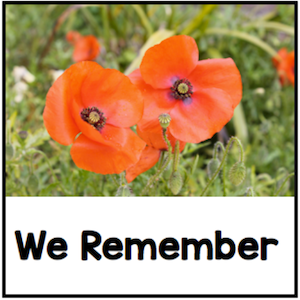








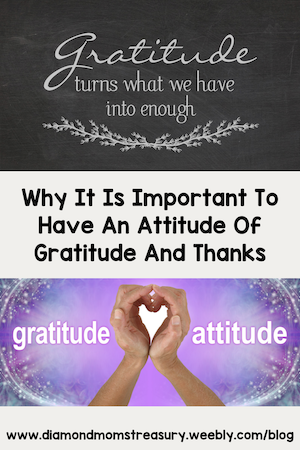

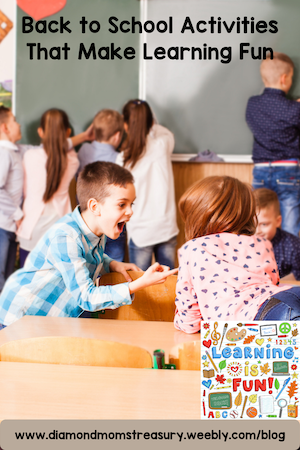






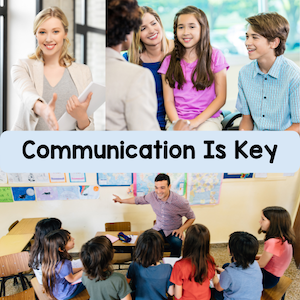

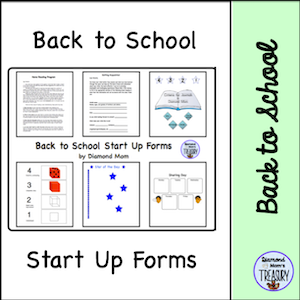










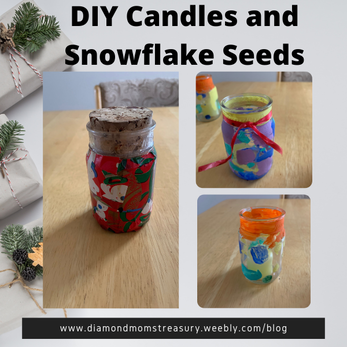




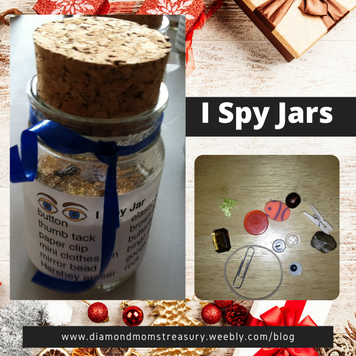







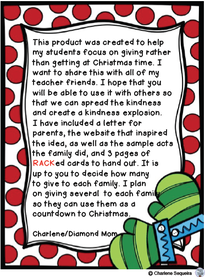








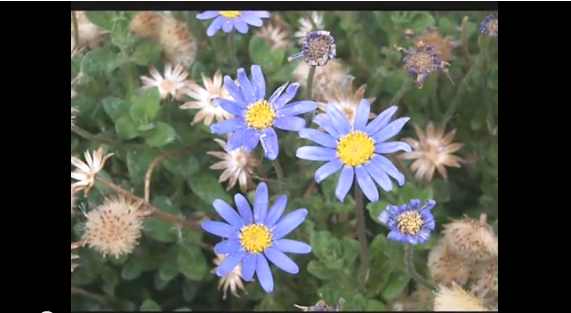


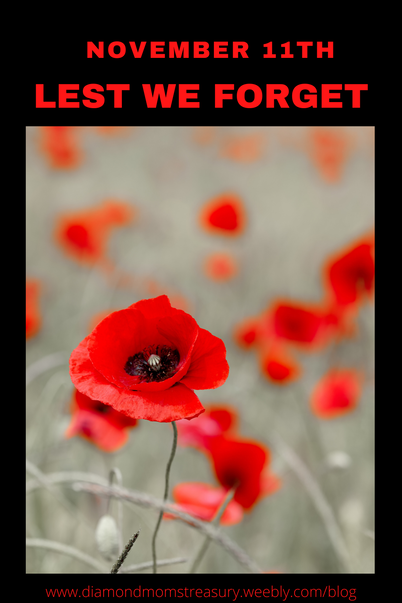











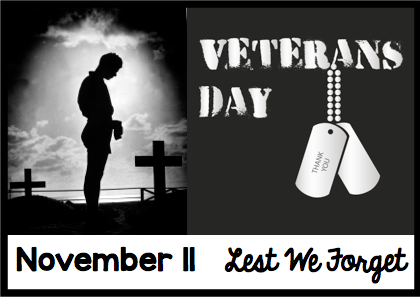







 RSS Feed
RSS Feed